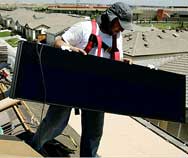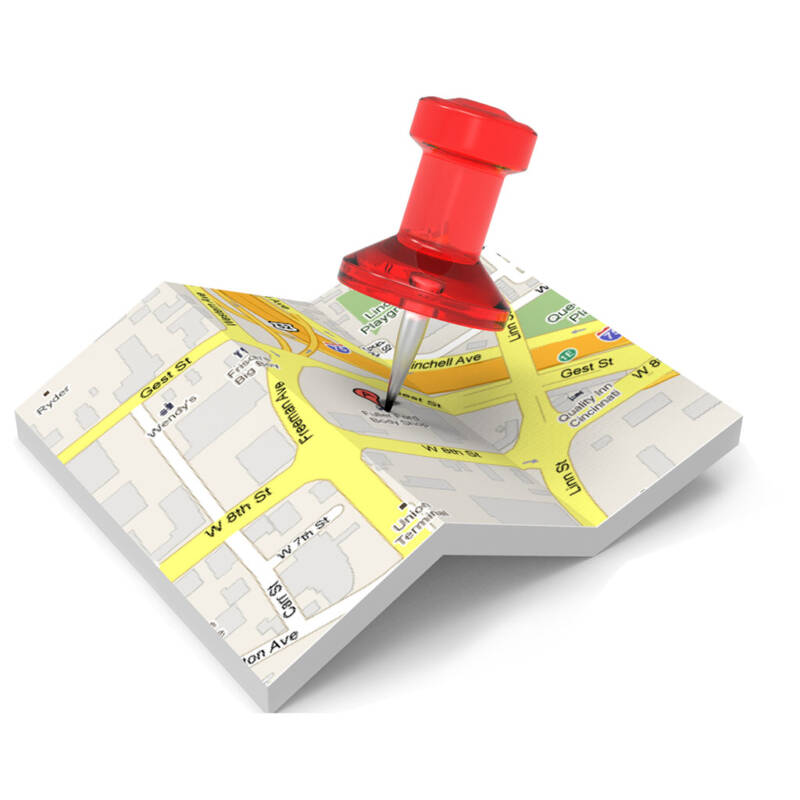
Use a local installer
After years of fits and starts, solar power is shedding its reputation as technology for hippies. With energy costs at record levels, and oil at a 12 month high, the economics of solar power have never looked brighter. The cost of installing solar panels has quietly fallen by half over the past 15 years, cutting the cost of a system that can power a typical home to about $30,000 for a state of the art version or half that for a basic but 100% reliable version. Analysts expect the cost to drop more rapidly over the next few years. Throw in tax breaks and other incentives, and the systems often can pay for themselves within a decade. In New Jersey, hardly a sunshine state, residential installations rose 56 percent last year, to more than 7,400. That’s admittedly a tiny number, but it’s a big leap from 2000, when all of 339 households switched. “Solar is now on a good sustained growth curve,” says Larry Sherwood, a researcher with the Interstate Renewable Energy Council.
The solar surge has been spurred by everything from government subsidies to improvements in photovoltaic panels, the basic building blocks that convert sunlight to electricity. But sunpower still faces hurdles. Those tax breaks and subsidies, for example, can be confusing — and they can run out, as New Jersey’s recently did. Since residential solar power is so new, experienced contractors can be hard to find. And while today’s PV panels are relatively unobtrusive, they still spark neighborhood quarrels over everything from building codes to tree pruning. All that said, the technology pays dividends both tangible (lower bills) and intangible (the joy of reducing greenhouse gases) — and homeowners who have taken the solar plunge mostly say they’re satisfied. Below, the ins and outs of creating a sun-powered home.
INSTALLING SOLAR GEAR
Ted Flanigan, an environmental consultant in Glendale, Calif., knows more about solar power than the average consumer. So he was all the more surprised at the range of estimates he got when he solicited bids for a home installation. You need more than just solar panels – there is the mountings and fixings, the cable leading to an inverter which monitors the system, stops the batteries overcharging and turns the power into the correct voltage. Oh yes, and those expensive batteries so you have somewhere to store the power. Some installers factored tax credits into their estimates, and some didn’t. One contractor tried to sell him a 4-kilowatt system — for an extra $7,500 — even though Flanigan knew, based on his electric bills, that it would provide more power than he needed.
Complaints about installers are, in fact, rising as inexperienced contractors enter the field. Last year the Better Business Bureau logged 105 such complaints, an increase of 34 percent over 2005. (One encouraging sign: Complaints aren’t rising as fast as installations are.) To bypass the duds, look for installers who have been approved by the North American Board of Certified Energy Practitioners; they have to pass a four-hour exam and have at least one year of experience in the field. However, their prices will be significantly higher. The ost important factor for an installer is they are based near you, so can return easily to fix things when they go wrong, as they will from time to time.
Setup costs can mount for homes that need renovations to support a solar array. An old house may need to upgrade the fuse box, for instance, which could add $1,500 to the tab. The biggest issue is usually the roof: Though the panels themselves are light, an older roof could give out before the panels start to fail, or the frame-mounts could cause leaks. Peter Adomeit, a law professor in West Hartford, Conn., decided to replace his 28-year-old roof — at a cost of $11,000 — before installing a solar array. Still, he anticipates saving money in the long run. “I intend to retire in this house,” he says, “and I don’t want to pay $600 electric bills in 20 years.”
Going solar may mean sacrificing some greenery. Even a ribbon of shade during peak solar hours, from 9 a.m. to 3 p.m., can reduce the panels’ efficiency. Richard Wellbrock, a homeowner in Watchung, N.J., had to chop down four beloved oak trees to make way for his panels. For many that is not an acceptable trade-off. If the trees aren’t on your property, you may need approval from local authorities or (worse) your neighbors. And even a solar-friendly town can throw up a zoning roadblock. Cydney Crampton, a financial adviser in Pacifica, Calif., had to pay $500 for an engineering report to satisfy the city that her roof could support solar panels. Then the city said the panels’ height violated building code limits — by 1 foot. “It was a ridiculous hurdle,” she says.
THE COST OF SOLAR
Eager to motivate homeowners to save energy, the federal government offers a solar tax credit worth up to $2,000. But the big savings come from financial incentives from state governments and utilities, with the best deals adding up to as much as $15,000 for a typical home system. (The Web site dsireusa.org shows what’s available in your state.) Utilities also play other roles in making solar pay. In the old days, homeowners had to store solar energy in a bank of batteries the size of a small closet that cost up to $7,000. Now most new systems hook up to the electric grid, and households receive credit for the wattage they generate, a practice called “net metering” that’s now available in 41 states. If you produce more than you consume, some utilities will even buy the surplus. The “solar-estimator” at findsolar.com, a Web site run by solar advocates and the Department of Energy, uses factors like these to help consumers figure out how quickly a solar power system can pay off.
The jury’s still out on whether solar power makes your home more valuable, but there are some promising signs. According to a study by ICF Consulting, every $1 reduction in annual fuel bills increases a home’s resale value by $10 to $25. Based on that math, Crampton figures her $28,000 system, installed this year, has already increased the value of her million-dollar home by a little over $20,000. And while a solar array near the end of its lifespan might hurt resale value, most solar homeowners are decades away from having to worry about that.
LIVING WITH SOLAR
Since 1999 some 25,000 American households have adopted solar power, and most give the technology high marks. It helps that the hardware has become more durable. The panels are engineered to withstand 50-mile-per-hour hailstones, and manufacturers now warranty them for 20 to 25 years against defects and power losses. One Achilles heel has been the inverter, the electrical box that converts solar energy into AC power. Inverters used to be covered by warranty for only five years and when they failed cost several thousand dollars to replace. New ones come with a guarantee of 10 years.
If folks are disappointed in solar power, it’s often because they get complacent about energy usage, says Mike Keesee, head of residential solar for the Sacramento Municipal Utility District. He points out that all the common-sense energy-efficiency tactics — upgrading your insulation, turning off lights, unplugging consumer-electronics devices — go a long way toward making the investment pay off. “Installing solar panels without conservation is like turning the heat on with the windows open,” says Blair May, a solar installer in Waldoboro, Maine. Improve your home’s energy efficiency, in other words, and you’ll profit even more from the sun.
—
More Bright Ideas for powering your home
Solar panels aren’t the only way to go green. Here are a few other ambitious ways to tap the energy of the earth, wind and sun.
GET POWER FROM THE GROUND: Geothermal heat pumps use a network of pipes buried a few feet under your yard to tap the earth’s relatively constant subsurface temperature, generating cool air in summer and warm air in winter. A typical system costs $7,500 and can cut annual utility bills by 30 to 60 percent. Payback period: two to 10 years.
SOLAR WATER HEATING SYSTEMS actually generate more power for the buck than solar electricity systems, as rooftop panels transfer the sun’s heat to a water tank. Prices range from $3,500 to $5,500, and homeowners can save up to 85 percent on their hot-water costs. Payback period: three to five years.
HARNESS THE WIND POWER: Farmers and ranchers now earn extra cash with wind turbines. To join them you’ll need a tower that’s at least 35 feet tall — no small obstacle, given most towns’ zoning rules. Prices start at $15,000. If that sounds too daunting, some utilities let you indirectly purchase wind power by paying extra to subsidize wind farms. Payback for a home turbine: at least 15 years.
Auto Amazon Links: No products found.
